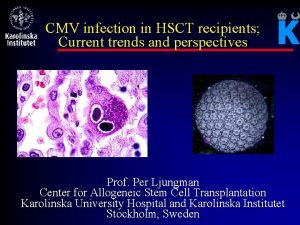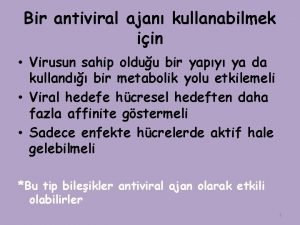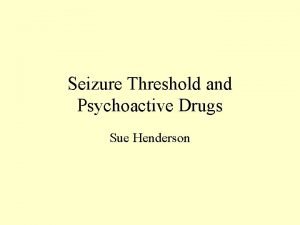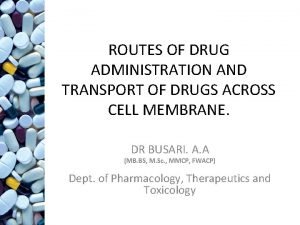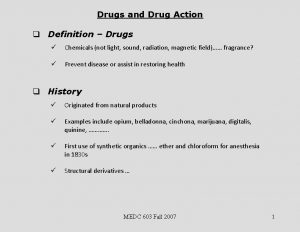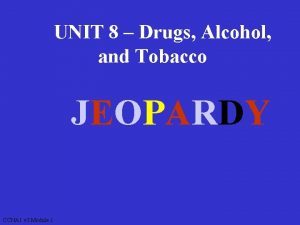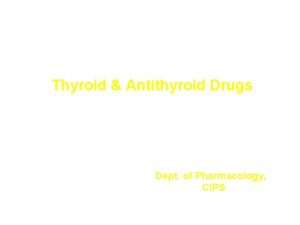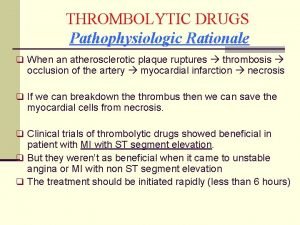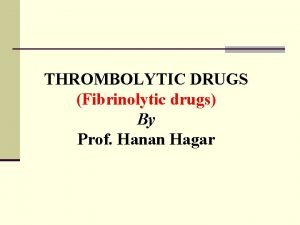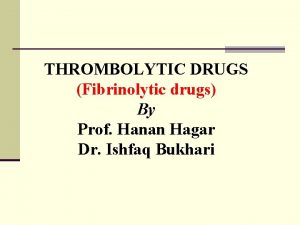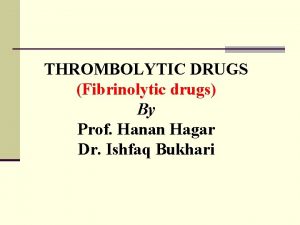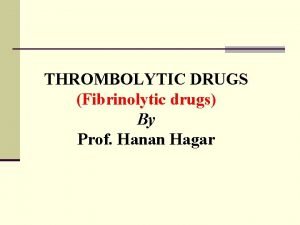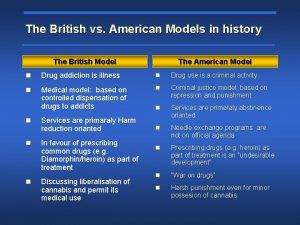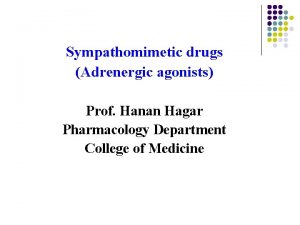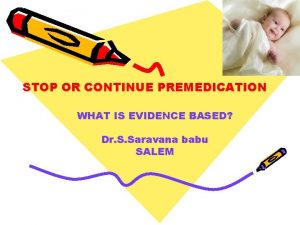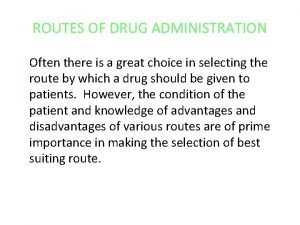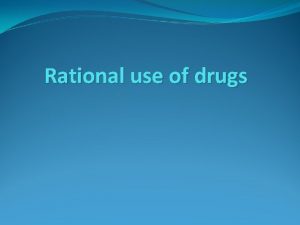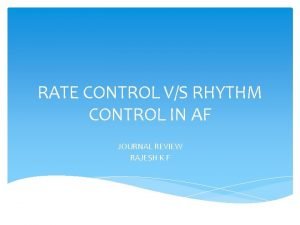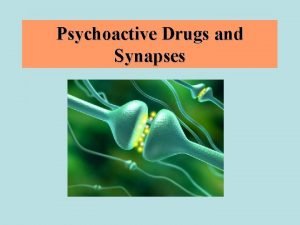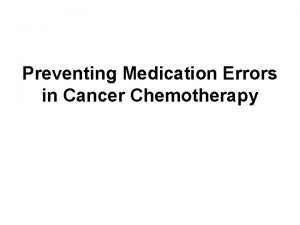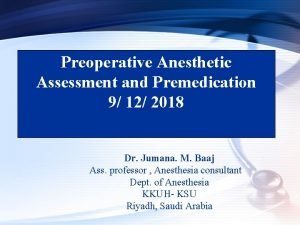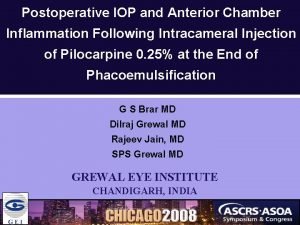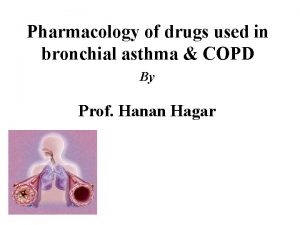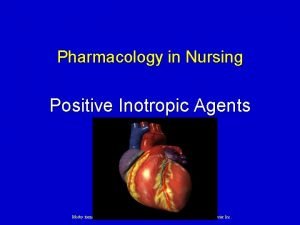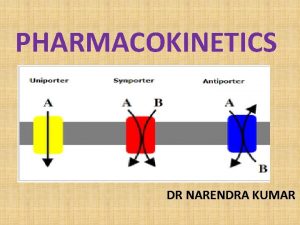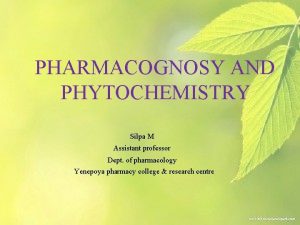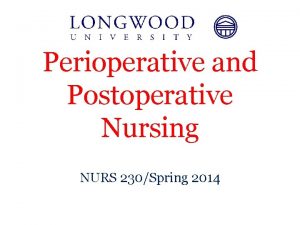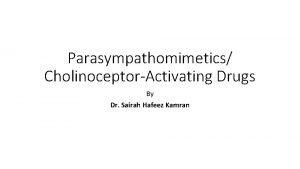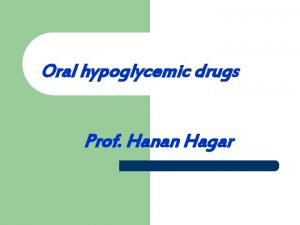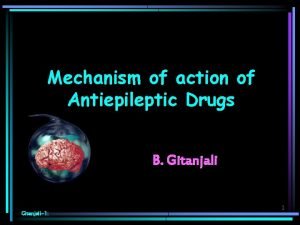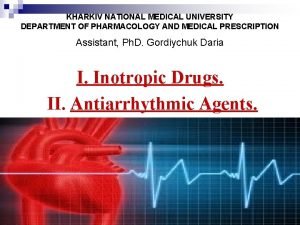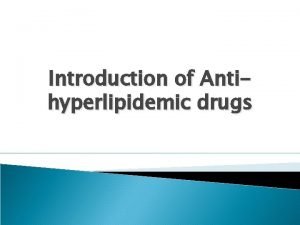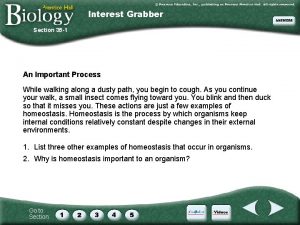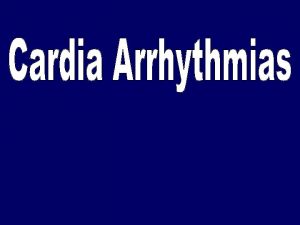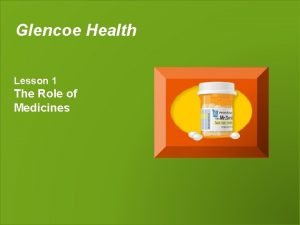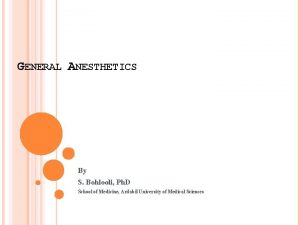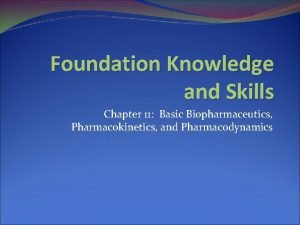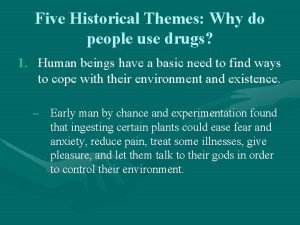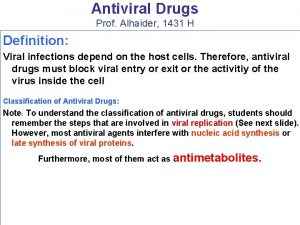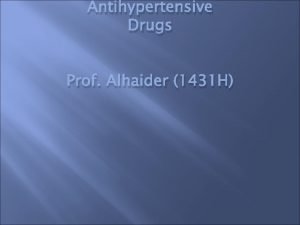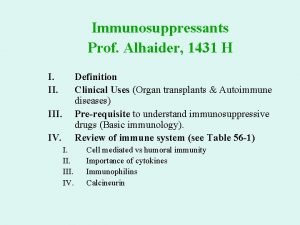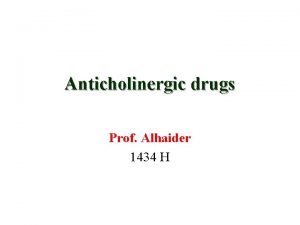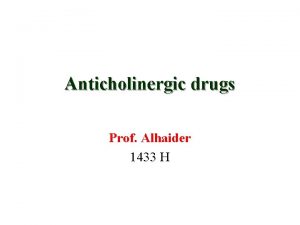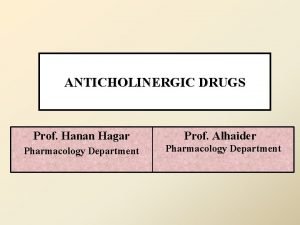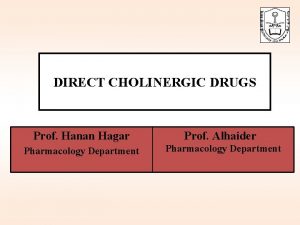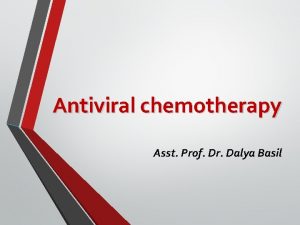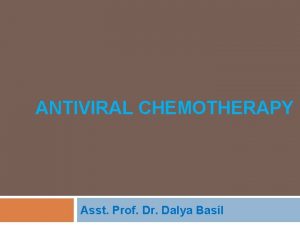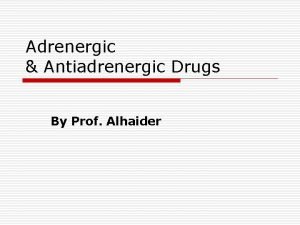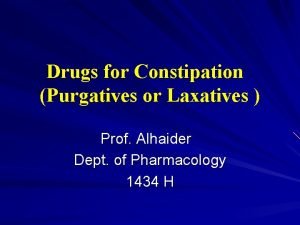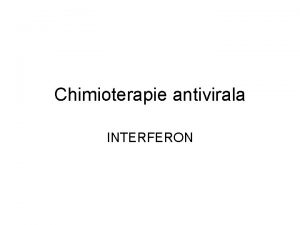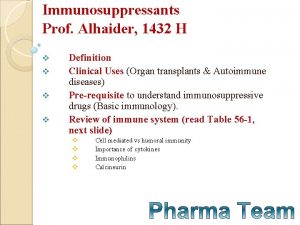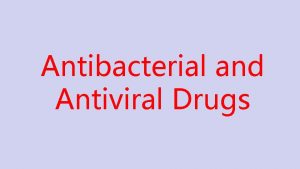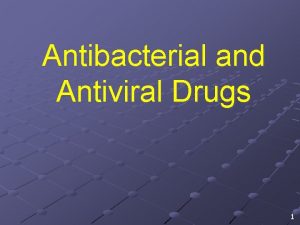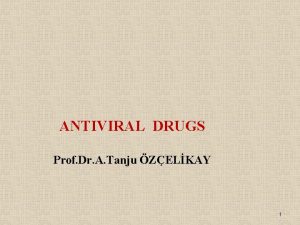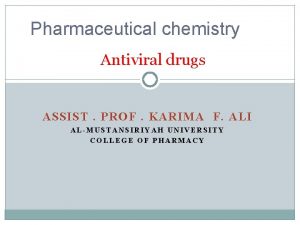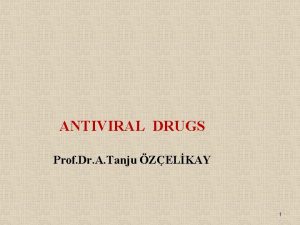Antiviral Drugs Prof Alhaider 1431 H Definition What





























































- Slides: 61

Antiviral Drugs Prof. Alhaider, 1431 H Definition: What are the differences between bacterial and viral infections? Classification of Antiviral Drugs: Note: To understand the classification of antiviral drugs, students should remember the steps that are involved in viral replication (See Figure 491). However, most antiviral agents interfere with nucleic acid synthesis or late synthesis of viral proteins. Furthermore, most of them act as antimetabolites.


Classification of Antiviral Drugs • Best Classification Based on 1) Type of Viral Infections (Organisms) or 2) its site: Agents to Treat Herpes Simplex virus (HSV) and Varicella Zoster Virus (VZV) infections. II. Agents To Treat Cytomegalovirus infection (CMV) III. Drugs Used for Rx of AIDS (Antiretroviral Agents) IV. Antihepatitis Agents V. Antiviral Used for Respiratory Tract Infections: • I. • •

Table 2: Types of Antiviral drugs 1 2 3 4

1) Agents to Treat Herpes Simplex virus (HSV) and Varicella Zoster Virus (VZV) infections. • Examples: Acyclovir (prototype); Valcyclovir; Famiciclovir; Trifluridine (Topical) • MOA: (49 -2) They are guanosine analogs without sugar moiety (so what? ). • Three phosphorylation Steps are required for activation (one depends on viral thymidine kinase), forming triphosphate form (1 in the viral 2 on the host). This (acyclo-GTP), will incorporate into viral DNA-causing premature DNA-chain termination (irreversible binding to viral DNA polymerase) and inhibition of DNA snythesis. • What is the effect of drugs on the host cells (not infected)?

, Ganciclovir ( P



• Resistance: Can be developed due to deficient or alteration of thymidine kinase and or alteration DNA polymerases. • Cross resistance: to valcyclovir, famiciclovir and gancyclovir • but no cross resistance for cidofovir (Cytomegalovirus drug)? Why (see Fig 49 -2)

PK of Acyclovir : –is available as oral (15 -20%) (not affected by food), topical and i. v. –Does it have high or low oral bioavailability? –Short t 1 l 2 3 hr (thus given 4 -5 times daily) and eliminated mainly by kidney (t 1 l 2 prolonged in renal impairment) t 1 l 2 20 hr. , –Distribute in ALL parts of the body including CNS (e. g: encephalitis). –What is Valacyclovir? . –What is the meaning of a prodrug? Clinical Uses (see Table 49 -1) HSV, Varicella-zoster VZV; Epstein-Barr virus mediated infection; HSV encephalitis; Genital herpes infection.


Side Effects of Acyclovir (Generally speaking, acyclovir considers to be save drug Why? , however, it may produce: 1. Transient Renal dysfunction at high dose or at i. v (Crystalline Nephropathy). RX 2. GIT disturbances How valcyclovir differs from acyclovir? High oral bioavailability; long duration (almost five times the plasma concentration) Can replace i. v cyclivir Effective even for CMV Side Effects: Thrombotic thrombocytopenic purpura in pts with AIDS



• II. Agents To Treat Cytomegalovirus infection (CMV) • Ganciclovir: Analog of acyclovir • Why Acyclovir is not active against CMV? • MOA: Similar to acyclovir • PK: How does it differ from acyclovir? – What is valganciclovir? Clinical Uses of Ganciclovir: i. v: (commonly used formulation) - to delay the progression of CMV retinitis in patients with AIDS 2 weeks followed by oral form) - for CMV colitis, esophagitis and pneumonitis. - to prevent CMV before trasplantation. Oral: (Used for prophylaxis) - CMC prophylaxis in transplant patients - prevention of end organ CMV disease in AIDS patients. - as maintenance therapy for CMV retinitis. Intraocularly (implant): Rx CMV retinitis.

Adverse Effects of Ganciclovir: - Myelosuppression (neurtroprnia 20 -30%) and increases if given with? Zidovudine; azathioprime, mycophenolate mofetil) - Vitreous hemorrhage and retinal detachment with intraocular implant. - Mitogenicity in mammalian cells and - carcinogenic in animals at high dose What is valganciclovir and when it should be used? Simply it is an oral replacement for i. V Ganciclovir.


• Cidofovir: – Differs from acyclovir in its long t 1/2 26 hr with active metabolite. and MOA. – Activity: CMC; HSV; VZV and in: – MOA: phosophorylation does not depend on viral enzyme, and works as inhibitor and alternative substrate for viral DNA polymerase. – Used for CMV retinitis, colitis, and esophagitis. and for Acyclovir-resistant PK: produce active metabolite, thus it has long t 1/2, eliminated in the kidney, Probenicid prolonged its action. but with poor CNS penetration. Why acycliver is better than Cidofovir for encephalitis? Side effects: Dose-dependent nephrotoxicity (53%) and uveitis and decrease IOP

• Note: Normally, RNA from DNA, however, • Reverse transcriptase = RNA-directed DNA polymerase (DNA polymerase that transcribes single- stranded RNA into double-stranded DNA.

• III. Drugs Used for Rx of AIDS (Antiretroviral Agents) – AIDS are caused by HIV, and zidovudine was the first drug used (1987). – To understand drugs used for AIDS, the life cycle of HIV should be utilized for drugs combination (See Figure 38 -16) – Drug combination or the so-called Highly Active Antiretriviral Therapy (HAART) (Figure 38 -17) as well as adherence to the regimen, both are very essential. Classification of Anti AIDS (Based on life cycle) Table 2 and Figure 38 -17): 1) Nucleotide Reverse Transcriptase Inhibitors (NRTIS) e. g. ; 2) Non Nucleotide Reverse Transcriptase Inhibitors (NNRTIS) e. g. ; 3) Protease Inhibitors e. g. Saquinavir; Ritonavir; Indinavir 4) Viral Fusion Inhibitor e. g. Enfuvirtide



• Objectives of HIV Treatment: – Suppression of viral replication (decrease the viral load). – Restoration of a degree of immunocompetency to the host. – Decrease incidence of opportunistic infections. – prolonged survival


Table 2: Types of Antiviral drugs

1) Nucleotide Reverse Transcriptase Inhibitors (NRTIS) Chemistry (Figure 49 -4): These are analogs of native ribosides (nucleotide with side chain containing ribose) but lack the 3’-hydroxy group. MOA: Similar to most antiviral drugs, require triphosphorylation but mainly by cellular enzyme. Competitive inhibitor of HIV-1 reverse transcriptase. The triphosphorylated analog (with no hydroxyl group) incorporate into viral DNA by virus RT, preventing DNA chain elongation (See Figure 3816) NRTIS can be classified into group A (thymidine Analoges) (Zidovudine and Stavudine) and group B: (Didanosin; Zalcitabine and Lamovidin)

Group A Group B


Zidovudine (AZT): 3 -azido 3 deoxythymidine (AZT) (Pyrimidine Analog) Important Discovery 1987 G MOA: Requires mammalian thymidine kinase for triphophorylation. Resistance: Due to high rate of mutation at several code. • PK: – Excellent oral absorption – Penetrate well to CNS but has short t 1/2. (3 hrs 100 mg q 5 hr) – Metabolized by liver to glucuronated AZT but eliminated by kidney, therefore: Its half life is affected in uremic and hepatic patients and by drugs that metabolized by glucoronidation. E. g. Uses: -The most important drug in HAART. - for Rx and prevention of neanate (transmission) 14 -35 of gestation and i. v during labor then AZT syrup from birth till 6 weeks. (decrease vertical transmission). Does it decrease the severity of infection in mother? Adverse effects: - Pronounced bone marrow suppression as severe anemia & leucopenia (increases if given with? ); thrombocytopenia. - Headache, insomnia & seizure at higher doses.

• Stavudine: – This is like AZT, a thymidine analogue (activated by the same enzymes) therefore, should not be combined with AZT – Like AZT has good oral bioavailability – Eliminated mainly by tubular secretion and glomerular filtration. – Major Side effect: sensory neuropathy and Hyperlipedemia but no leucopenia Note: MCQ on side effect of Stavudine specially that related to neuropathy.

Tenofovir: • (it has one phospahate group in its structure) therefore requires only two phosphorylation • Has long t 1/2 (once daily) • Similar to AZT requires dose adjustment in renal impairment. • Unlike AZT has no myelosuppressive effect.

• Didanosine (dideoxyinosine) With out the two hydroxyl group. – Differ from Zidovudine: • Low oral bioavailability and destroy by acid (given before meals), but they change to chewable Tablets. • Used for AZT resistance. • Like AZT, Its elimination is dependent on kidney. • However, It is a chelating agent (interaction with tetracyclins and fluroquinoline (Two hour should be given before or after). Side Effects: • Pancreatitis (check serum amylase) increases in alcoholics • Peripheral neuropathy (Dose related); hepatitis, but unlike AZT has no leucopenia. • Optic neuritis • Hyperuricemia Note: should not be combined with AZT! Antagonize each other. • Zalcitabine: – Similar to Didanosine

• Lamivudine: – This cytosine analog is the most interesting anti viral drug, because it can be used for HIV and HBV infections. Advantages: - Like AZT has good oral bioavailability with active metabolite. Safest drug among NRTI - Can be combined with AZT COMBIVIR (Lamovidine 150 mg + Zidovudine 300 mg) - No significant side effects because it does not affect mitochondrial DNA synthesis or bone marrow precursor cells Disadvantages: has high rate of mutation if given alone, therefore should be combined in case of AIDS and hepatitis). Is there any differences in the dose of Lamivudine for HIV and HBV patients?

• Zalcitabine (dideoxycytidine ddc) – Does it remind you with Didanosine? This drug used as replacement for Lamivudine in HIV, but differ in the following: 1) Oral bioavailability is dependent on food (Why? ) 2) Similar to didanosine, it produces dose dependent neuropathy due to inhibition of mammalian mitochondrial DNA polymerases. 3) Pancreatitis but less than didanosine.

Emtricitabine: This is fluoro-derivative of Lamuvidine; can replaced the former in HBV and HIV pateints. Which of the following drugs does not cause peripheral neuropathy? a) Lamivudine b) Stavudine c) Didanosine d) Zalcitabine

2) Non Nucleotide Reverse Transcriptase Inhibitors (NNRTIS) e. g. ; Nevirapine; Efaverenz MOA: Bind selectively and non-competitive way to HIV reverse transcriptase at a side adjacent to that of NRTIs, and from their names they are neither nucleotide triphosphate nor require phosphorylation to be active. Resistance: Rapid resistance can be developed but it is not cross resistance to NRTIs or protease inhibitor. Main features: These drugs are lipophilic in nature with high degree of protein binding and oral bioavailability. Also, some of them either inhibit or enhance the liver metabolic enzymes. Hypersensitivity has been observed with their use as serous rashes and Steves-Johnson syndrome. LFT

• Nevirapine: PK: Lipophilic drug with high oral bioavailability. (not food dependent) Metabolized by liver and it is enzyme inducer, may decrease the t 1/2 of some drugs including anti AIDS, contraceptives and warfarin. Uses: In AIDS, it is only used together with other antiretrovirals. Single dose (200 mg) for transmission of HIV from mother to newborn A single dose of nevirapine to the mother, with or without a dose of nevirapine to the infant, added to oral zidovudine prophylaxis starting at 28 weeks' gestation, is highly effective in reducing mother-tochild transmission of HIV. N Engl J Med. 2004 Jul 15; 351(3): 217 -28. Epub 2004 Jul 9 Disadvantages; Life threatening skin rashes including Stevens-Johnson Syndrome and toxic epidermal necrolysis (can be reduced by Starting with low dose). Fulminant hepatitis Delaviridine: It is unlike nevirapine, it inhibits CYP 3 A, with rash but not to the degree of Stavens Johnson Syndrome.

• Efaverenz (commonly used NNRTI Safest): Drug with long t 1/2 (40 -55 hrs) with high albumin binding; metabolized in the liver with some enzyme induction. Side Effects: Occur only in the beginning of therapy, mainly in CNS (agitation, delusion; nightmares; euphoria) Note: Unlike, nevirapine, efaverenz should not be used in pregnancy (fetal abnormalities) Note: Enzyme inhibitors and inducers affects ALL NNRTI to the same level.



• HIV Protease Inhibitors: • Very good Discovery 1995, make significant Decline – MOA: • Reversible inhibitors of the HIV aspartyl protease • What is aspartyl protease? • Are these drugs specific for HIV protease as compared to human? (Thousand) – PK: • In contrast to NNRTIs, most protease inhibitors have poor oral bioavailability and affected by by meal. • All are metabolized in the liver CYP 3 A 4 isozyme of Cyto P 450, and some of them like Ritonavir is CYP 3 A 4 inhibitor. • High protein binding and pass blood BB.

• What is the pharmacokinetic enhancer? Drug Interaction: Pharmacokinetic Type Since they are inhibitors of CYP isozyme (Ritonavir (strong) while Saquinavir is the least) Drug interaction so common e. g: Statins; Benzodiazepines; Fentanyl; warfarin; phenytion Side Effects: • Common: Parasthesias, N/V and Diarrhea. Hyperglycemia, Hypertriglyeridemia, LDL. Chronic use gives rise to Buflo hump and breast enlargement. (Similar to steriods but

Ritonavir – Is not uesd alone as a single protease inhibitorm but it is used as pharmacokinetic enhancer. – Side effects: GIT; paresthesia; hypertriglycemia; elevated AST • Indinavir: – Well absorbed orally with lowest protein binding among this group and high penetration to the CNS; but should be given in empty stomach. – Enzyme inhibitor – It is given together with Ritonavir as Trade name Side Effects: - Indirect hyperbilirubinemia, thrombocytopenia and nephrolithiasis due to crystallization of the drug (good hydration). Fat disribution. • Lopinavir/Ritonavir (Common and prefered combination) – Here, Ritonavir is used to suppress CYP 3 A 4. – What are the drugs that decrease the level of Lopinavir?

Lopinavir 100 mg /ritonavir 400 mg (continue…) - Advantages - potent antiretroviral activity - co-formulated as Kaletra(R) - once daily dosing is an option for treatment-naive patients - no food restriction with oral tablet formulation - Disadvantages - GI intolerance (once daily associated with a higher incidence compared with twice daily) - hyperlipidemia - possibly lower drug exposure in pregnant women • Saquinavir: – Available as hard gel capsule or soft. However, this drug has very short t 1/2 and low bioavailability (12% and decreases of taken with fatty meal); therefore, it is combined with ritonavir. Why? – Side Effects: Headache and nausea.

MCQs • Which of the following are protease inhibitors: 1) Nelfinavir 2) Saquinavir 3) Abacavir 4) Ritonavir 5) Tenofovir Nevirapine is a 1) Protease inhibitor 2) NRTI 3) NNRTI 4) Fusion inhibitor Regarding Ritonavir in AIDS 1) should not be used alone 2) contraindicated in renal failure 3) GIT symptoms can be seen 4) may decrease the level of warfarin

Regimens for RX of AIDS patients. Highly Active Antiretriviral Therapy (HAART) • (Figure 38 -17) consists of: Two NRTIs (why) plus: – One NNRTI or protease inhibitor However, now aday most regimens use protease inhibitors What should be done if some one working in the medical field is exposed accidentally to AIV virus? How to decrease the development of mutation to HIV medications? 1) Drugs combination 2) Adherence to medication (missing 6 doses/year)

Regimens - Preferred: (One NNRTIs Plus Two NRTIs) - Efavirenz (NNRTI) plus (lamivudine or emtricitabine) Plus (zidovudine or tenofovir (NRTI)) (except in first trimester of pregnancy or women with high pregnancy potential) - Alternative: - Efavirenz plus (lamivudine or emtricitabine) plus (abacavir or didanosine or stavudine*) (except in first trimester of pregnancy or women with high pregnancy potential) - Alternative: - Nevirapine**(NNRTI) plus (lamivudine or emtricitabine) plus (didanosine or zidovudine or stavudine* or abacavir or tenofovir) - * Stavudine has higher incidence of lipoatrophy, hyperlipidemia, and mitochondrial toxicities than other NRTIs

Protease Inhibitor-based • Regimens (2 NRTI plus prorease inhibitor) - Prefered - Indinavir/ritonavir (Kaletral) * plus (lamivudine or emtricitabine) plus (zidovudine or stavudine** or abacavir or tenofovir or didanosine) - Alternative: - Lopinavir/ritonavir plus (lamivudine or emtricitabine) plus (stavudine** or abacavir or tenofovir or didanosine) However, there are too many protocols for this type of treatment •

3) Viral Fusion Inhibitor): Enfuvirtide MOA: Block entry into the cell. Use: not orally but SC for resistance HIV-1 patients. Regimens for RX of AIDS patients (HAART) (see Fig. 3817).


• IV. Antihepatitis Agents: • Like in AIDS, they are suppressive rather than curative. Among many hepatitis viruses, HBV and HCV are the most common cause of chronic hepatitis, cirrhosis, and HCC. • Drugs for Hepatitis B (see Table ) – Lamivudine: – MOA: inhibit HBV DNA polymerase and HIV reverse transcriptase, resulting in chain termination. • This safest NRTI antiretroviral drug, shows prolonged intracellular t 1/2 in HBV cell lines (17 -19 Hr), than in HIVinfected cell line. So What? . Effectiveness: Achieves almost universal HBV DNA suppression, with decrease in viral replication; and decrease progression to liver fibrosis. Response is more rapid than using interferon alone.

• Resisitance: – 20 % can occur after 8 -9 months of therapy. – What is the evidence of resistance? • 2. Aldefovir: – This nucleotide (NRTIs) analog is also HBV infection especially in lamivudine resistance cases. – Is there any cross resistance between lamivudine and Aldefovir? – Side effects: • Eliminated by glomerular fil. and tubular secretion, thus it is nephrotoxic. • Lactic acidosis and hepatomegaly with steotosis may occur.

• 3. Interferon Alfa: – Endogenous glycoprotein or cytokine that produced in human leukocytes and exert anitviral, immunomodulatory and antiproliferative activities. Commercially available as: • Interferon alfa-2 b: Licensed for Rx of HBV and acute hepatitis C. • Interferon alfa-2 a: can be used for HCV (Either alone or better with oral Ribaverin (quanosine analog). Note: Both types can be used for HCV MOA: Unclear but may be via the induction of host cell enzymes that inhibit viral RNA translation and thus degradation of viral m. RNA and t. RNA.


• PK of interferons: – Both types could be administered either S. C or I. M. with short t 1/2. (4 -7 hrs) – Filtered unchanged in the glomeruli with protolytic degradation in the tubule. – What are the differences between interferon and pegelated interferon Alfa? 1) Strucure: Peg Interferon alfa-2 a and 2 b represent the corresponding interferons with branched polyethylene moiety is attached by covalent bind. Thus, 2) Peg has longer t 1/2 as compared to normal interferon. (80 Hr vs 5. 1 for alfa-2 b) and increase in renal impairment. 3) Efficacy is superior to non-pegelated interferon.

Other Uses of Interferon: 1) Cancers such as hairy-cell leukemia and Kaposi sarcoma related to AIDS. 2) Multiple Sclerosis 3) topically for genital warts. 4) prevent dissemination of herpes zoster in cancer patients or immunocompromised patients 5) Multiple myeloma Side Effects of interferons: -Since they are endogenous types of proteins, they may produce Flu-like symptoms within 6 hr in more than 30%, with N/V and anorexia; fatigue; rash; alopecia. - Thrombocytopenia: granulocytopenia and elevation in aminotransferase level mainly in responders. Induction of autoantibodies. - Mental depression and Neurotoxicity (somnolence) Contraindications: Psychosis; neutropenia; thrombocytopenia; dermatomyositis (why). ; organ transplanted patients.

Ribavirin: Guanosine analog requires phosporylation; and inhibits the replication of wide range of DNA and RNA viruses, including HCV; HIV; influenza A & B and respiratory syncytial virus (RSV). Uses: Orally: together with interferons for HCV. Inhaled: For (RSV).

RR Ribaverin ii bb aa vv

• V. Antiviral Used for Respiratory Tract Infections: 1) Inhibitors of viral coating (e, g: Amantadine* and Rimantadine: MOA: will Inhibit uncoating of viral RNA of influenza to the infected host cell, via blocking the viral membrane matrix M 2 protein, thus it inhibits the replication of viral RNA. Note: M 2 protein only present in Influenza A? So What? PK: Amantadine eliminated unchanged in kidney, while rimantadine is metabolized in the liver. Both drugs can pass BBB and available in Tablet forms. Which one is preferred in a patient with renal failure? Uses: For prophylactic and treatment of Influenza A (Influenza B has different protein in the membrane). Side Effects: CNS: Nervousness, difficulty in concentration, lightheadness GIT: * Note: Amantadine is also used for management of Parkinson disease.

• 2. Neuraminidase Inhibitors: What is neuraminidase? Viruses that cause infuenza like orthomyxovirus contain the neuraminidase; which can be selectively inhibited by Zanamavir and Oseltamivir. MOA: - Via inhibition of neuraminidase these drugs inhibit the release of new virions (Influenza viruses employ specific neuroaminidase that is inserted into the host cell membrane for the purpose of releasing newly formed virions. Thus virions accumulate at the internal infected cell surface. . - Active against both Influenza A and B. What is the difference between Amantadine and Zanamavir? What are the differences between Zanamavir (Inhaled) and Oseltamivir (Oral)? Why Zanamavir should not be given for patients with

• 4. Palivizumab: – Huminized monoclonal antibody directed against the F glycoprotein on the surface of RSV – Uses: only for prevention of high- risk infants
 Second antiviral pill
Second antiviral pill Idoksüridin
Idoksüridin Psychoactive drugs definition
Psychoactive drugs definition Sympatholytic drugs classification
Sympatholytic drugs classification Local route of drug administration
Local route of drug administration Drug action definition
Drug action definition Drug and alcohol jeopardy
Drug and alcohol jeopardy Schedule 1 drugs
Schedule 1 drugs Liothyronine
Liothyronine Thrombolytic drugs
Thrombolytic drugs Fibrinolytic drugs
Fibrinolytic drugs Thrombolytic drugs
Thrombolytic drugs Thrombolytic drugs mechanism of action
Thrombolytic drugs mechanism of action Thrombolytic drugs mechanism of action
Thrombolytic drugs mechanism of action British model involved with drugs
British model involved with drugs Phenylephrine mechanism of action
Phenylephrine mechanism of action Sar of anticholinergic
Sar of anticholinergic Premedication drugs list
Premedication drugs list Section 17-3 practice commonly abused drugs
Section 17-3 practice commonly abused drugs Schedule 2 drugs
Schedule 2 drugs Mydriatics and miotics drugs
Mydriatics and miotics drugs Zeroth order kinetics
Zeroth order kinetics Remains poem summary
Remains poem summary Principles of rational drug use
Principles of rational drug use Rate and rhythm control drugs
Rate and rhythm control drugs Neurotransmitters and drugs
Neurotransmitters and drugs Metabolism of drug definition
Metabolism of drug definition Slit junction
Slit junction Define drug metabolism
Define drug metabolism Look alike drug list
Look alike drug list Tocolytic drugs
Tocolytic drugs Tocolytics examples
Tocolytics examples Tractosyl
Tractosyl Ppiucd tray
Ppiucd tray Premedication drugs list
Premedication drugs list Intracameral pilocarpine
Intracameral pilocarpine Physicochemical properties of drugs
Physicochemical properties of drugs Bronchial tree
Bronchial tree Theophylline mechanism of action
Theophylline mechanism of action Negative chronotropic effect of digoxin
Negative chronotropic effect of digoxin Lidocaine in cardiac arrest
Lidocaine in cardiac arrest Metaboloism
Metaboloism Differentiate between organised and unorganised crude drugs
Differentiate between organised and unorganised crude drugs Ws of post op fever
Ws of post op fever Parasympathomimetic drugs
Parasympathomimetic drugs Cholinomimetic definition
Cholinomimetic definition Sulfonylurea moa
Sulfonylurea moa Schedule 5 drugs
Schedule 5 drugs Mechanism of action of antiepileptic drugs
Mechanism of action of antiepileptic drugs Resisting pressure to abuse drugs is a responsible .
Resisting pressure to abuse drugs is a responsible . Class 3 antiarrhythmic drugs mechanism of action
Class 3 antiarrhythmic drugs mechanism of action Rahbdomylosis
Rahbdomylosis Section 35-1 human body systems answer key
Section 35-1 human body systems answer key Cardioversion anticoagulation
Cardioversion anticoagulation I am poems
I am poems Transesophageal echocardiogram procedure
Transesophageal echocardiogram procedure Chapter 19 medicines and drugs vocabulary practice
Chapter 19 medicines and drugs vocabulary practice Volume of distribution explained
Volume of distribution explained General anesthesia drugs dosage
General anesthesia drugs dosage Large volume of distribution drugs
Large volume of distribution drugs Five historical themes of drug use
Five historical themes of drug use Amas faa
Amas faa
